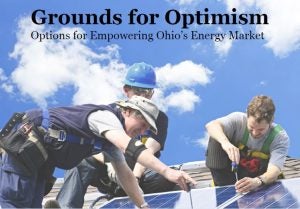 Dustin McCartney, senior data analyst at Pecan Street, co-authored this post.
Dustin McCartney, senior data analyst at Pecan Street, co-authored this post.
Have you ever thought about how much water your dryer needs to dry your clothes? (And no, I don’t mean your washing machine.)
Every appliance in your home has a water intensity, or the amount of water needed to make and send the electricity that powers it. On the flip side, all water – like in your faucet, toilet, and irrigation system – has an energy intensity, the amount of electricity needed to treat, distribute, or heat the water. Chances are, you probably haven’t given much consideration to the water intensity of your home energy, or the energy intensity of your water. There hasn’t been any data at the household level – until now.
Environmental Defense Fund (EDF) recently teamed up with Pecan Street, Inc. to examine these combined metrics in a new study. Pecan Street, a research group running the most extensive energy-tracking in U.S. history, analyzed the energy and water costs of a group of Austin homes and their appliances.
By gathering granular data on how much energy and water households use, as well as their associated energy and water intensities, this study reinforces the need for smart technology to help us better understand and manage energy and water. Moreover, in order to safeguard water supplies, the analysis demonstrates the importance of powering our lives with low-water clean energy resources. Read More











 It’s no secret that companies use goals to push their businesses in a positive direction. Whether it’s about creating more value or reducing impacts, goals provide focus, direction, and a sense of urgency. Recently, a wave corporate, climate-related goals, such as renewable energy and emissions-reductions targets, have grabbed the public’s attention. Companies, cities, and other large institutions are
It’s no secret that companies use goals to push their businesses in a positive direction. Whether it’s about creating more value or reducing impacts, goals provide focus, direction, and a sense of urgency. Recently, a wave corporate, climate-related goals, such as renewable energy and emissions-reductions targets, have grabbed the public’s attention. Companies, cities, and other large institutions are  The Greenlining Institute partners with Environmental Defense Fund (EDF) and is a policy, research, organizing, and leadership institute working for racial and economic justice. They recently released a report highlighting how inclusive policy can make electric vehicles accessible to all. Here at EDF, we know clean energy policies cannot be truly transformative without accessibility across all income levels and among all communities. Indeed, that is the only way we will accomplish our goal of curbing harmful climate change.
The Greenlining Institute partners with Environmental Defense Fund (EDF) and is a policy, research, organizing, and leadership institute working for racial and economic justice. They recently released a report highlighting how inclusive policy can make electric vehicles accessible to all. Here at EDF, we know clean energy policies cannot be truly transformative without accessibility across all income levels and among all communities. Indeed, that is the only way we will accomplish our goal of curbing harmful climate change. 
 By
By